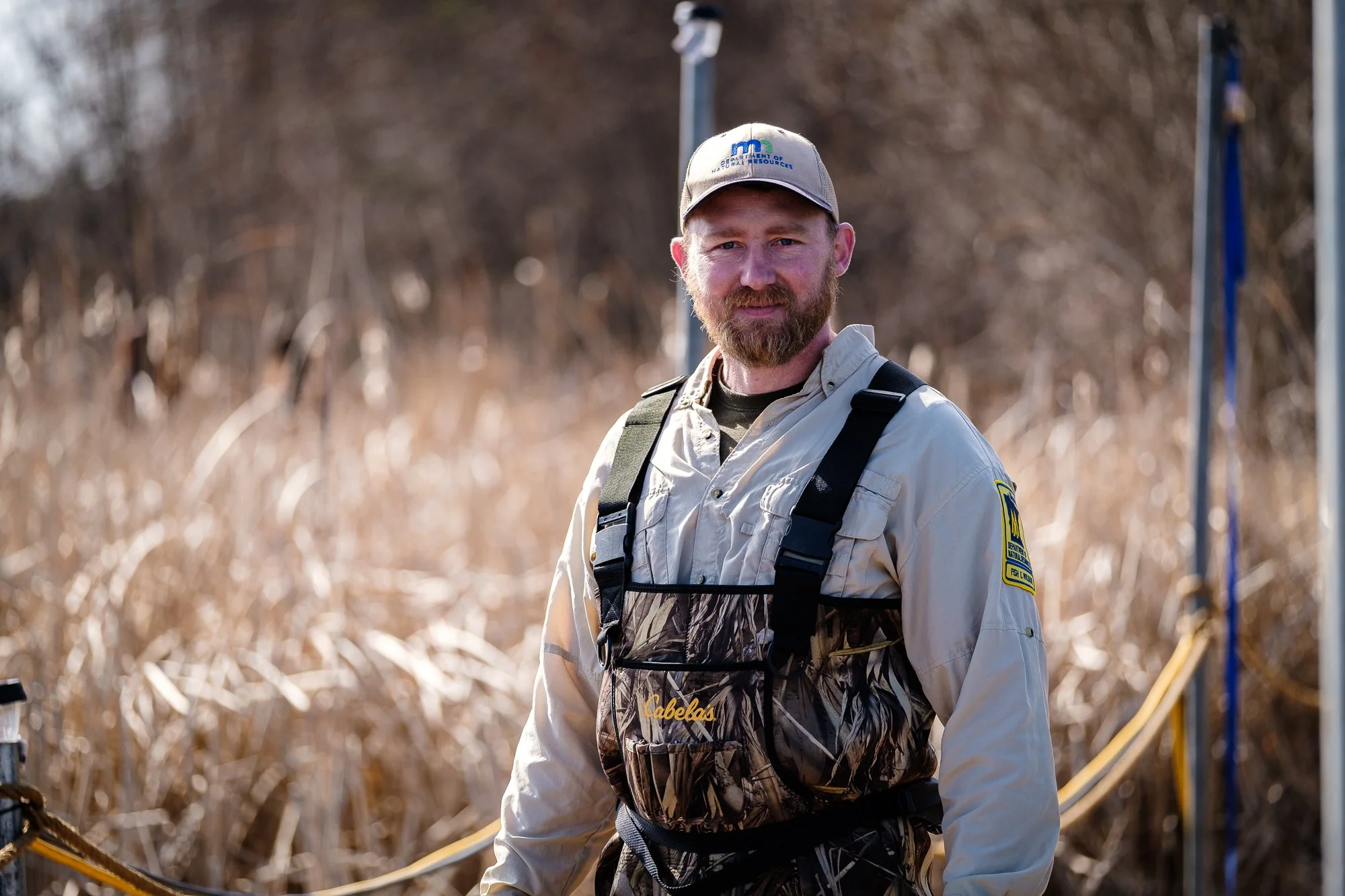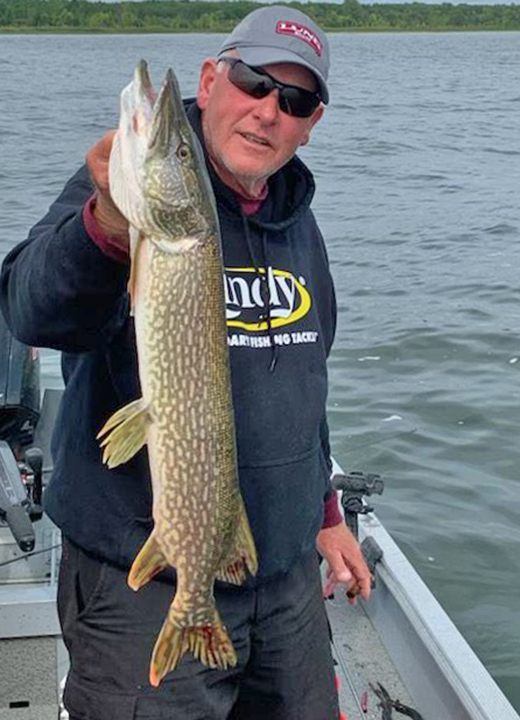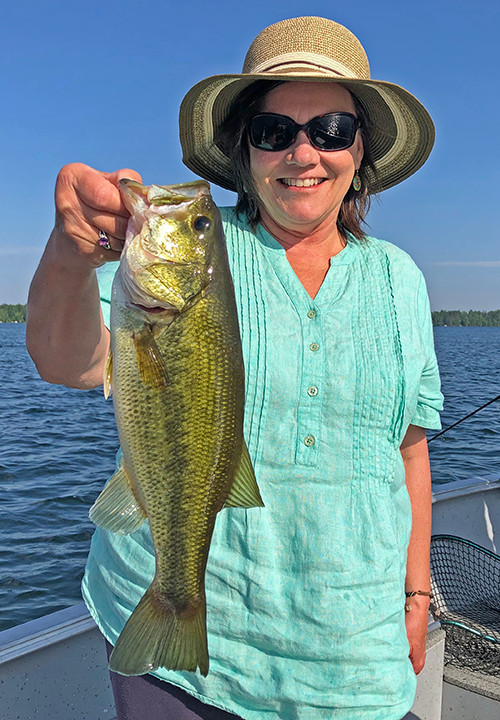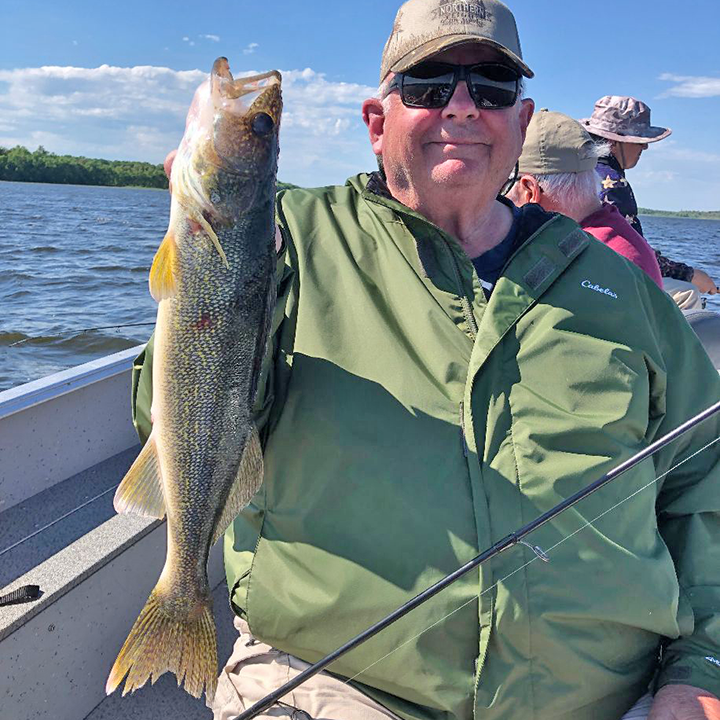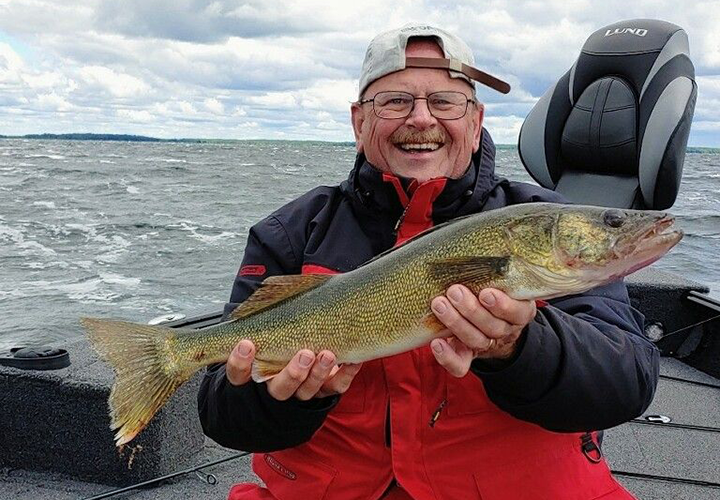We’ve learned that when the surface water temperatures drop below 70 degrees, it is time to watch for signals or early fall fishing patterns. As of Friday (8-27), the surface temperature in Little Cutfoot Sioux Cutfoot Sioux fell to 68 degrees. On Big Winnie, the water held steady at 69.9 degrees and Big Cutfoot hovered at 70.5 degrees.
As temperatures decline, water clarity will improve, but so far, the lake water remains diffused by moderate-to-strong algae blooms. Average water clarity is in the 3-to-5-foot range depending on which areas we check out.
August 27, 2021: Strong winds, cloudy skies and super fishing action! Winnie Walleyes on the prowl in shallow water as fall patterns emerge.
Walleyes, pike and perch are showing up in increasing numbers on shallow, shoreline breaks, rocky patches and weed beds. On overcast days that feature brisk winds, fishing action is getting intense.
A report by one of the local guides includes this; “The windier and cloudier the conditions are, the better walleyes bit. Last Saturday was overcast, there were 2-to-3-foot waves in the northwest corner of Winnie and the walleye action was very good. Early in the day, the average size was smaller, 10-to-13-inch fish were most common, but as the waves rolled along the shallow breaks, larger fish began showing up. Limits of 14 to 16 fish were bagged for all 3 of my fishing customers.”
That report has repeated itself a couple of times this week. When conditions get blustery, both the fishing action and the average size improves. Not that fish won’t bite under sunny skies and calmer conditions, they will. But on calm days, fish tend to scatter across the flats and anglers should expect longer waiting times between strikes, along with smaller average size fish when the weather is calm.
Many, if not all the guides are using spinners as a primary presentation. Jig and minnow fishing is getting more reliable by the day though and the most versatile anglers are trying both approaches on every fishing trip. Using 1/8 ounce jigs tipped with fathead minnows is standard, but have some 1/16 ounce jigs on hand too, sometimes they will be need to reach into shallow, 2-1/2 to 5 foot stretches of gravel, or shallow weed patches.
Panfish always begin entering conversations around the lodge at this time of year. Some of our guests are catching both Crappie and Sunfish in both Big and Little Cutfoot Sioux. Depending on weather conditions, action can be good during daytime hours, but sunshine and calm water will encourage panfish to revert to early morning and late evening feeding periods. Most sunfish are still related to vegetation, crappies are beginning to show up in open water, particularly in Little Cutfoot.
Logan (L) Raymond and Josephine (R) Shouse with nice batch of crappies caught in Little Cutfoot Sioux August 26, 2021
Jig heads tipped with live bait are the most productive presentation for panfish right now. But using spinners tipped with live bait can also be used as a good search tool to locate them.
Perch, mainly on the big lake are showing up at random intervals, in a variety of locations. This week, there have been good catches reported from all 4 sides of the lake. South end, at the corner where shallow water meets the beginning of the Bena Bar. On the west side, anywhere from Sugar Bay to Mallard Point. On the north shore, near Pidgeon River and to the east, weedy stretches in Tamarack Bay.
Like walleyes, perch are sluggish on calm days, but can be caught, especially if its overcast. On calm, sunny days, they can be enticed by slow walking a jig and minnow over rock and gravel patches in 10 to 16 feet of water. When it’s cloudy, shallow patches of gravel will produce fish.
For perch, trolling spinners will allow you to locate them faster, but most often, fishing slower with a jig and minnow will be more efficient. So, use the spinners as a search tool, but a jig and minnow for triggering the most strikes. Don’t overlook Lindy Rigs either, short, 30-inch snells with a #2 minnow size hook, tipped with large fatheads can be an awesome perch producer.
Lake Winnie Northern Pike are getting fatter and sassier these days.
Pike are on a rampage, roaming the flats and shallow weed patches. For many, catching pike incidental to walleye fishing is good enough. But targeting pike, especially larger ones call for a more pointed approach.
Casting large spinnerbaits, in-line bucktails and swim baits are productive right now. Slip floats and suspended sucker minnows are good too, especially when its sunny and pike won’t rise above the cabbage to grab the more aggressive lures.
Follow the edges of deeper weed patches that are adjacent to large, mid-depth flats. Be sure to check shallower vegetation too, particularly when they lay adjacent to steep, inside corners located close to the shoreline. Rocks are attractive to pike as well, so don’t skip over rock piles and gravel stretches located in and around cabbage patches.
As we approach the Labor Day weekend, the weather forecast appears to be mixed. Calmer, more summer-like weather is about to return. Still, we see some hopeful conditions in the forecast too and expect periods of excellent walleye fishing during the next week. We’ll be prepared to post frequent updates about conditions and presentations.




